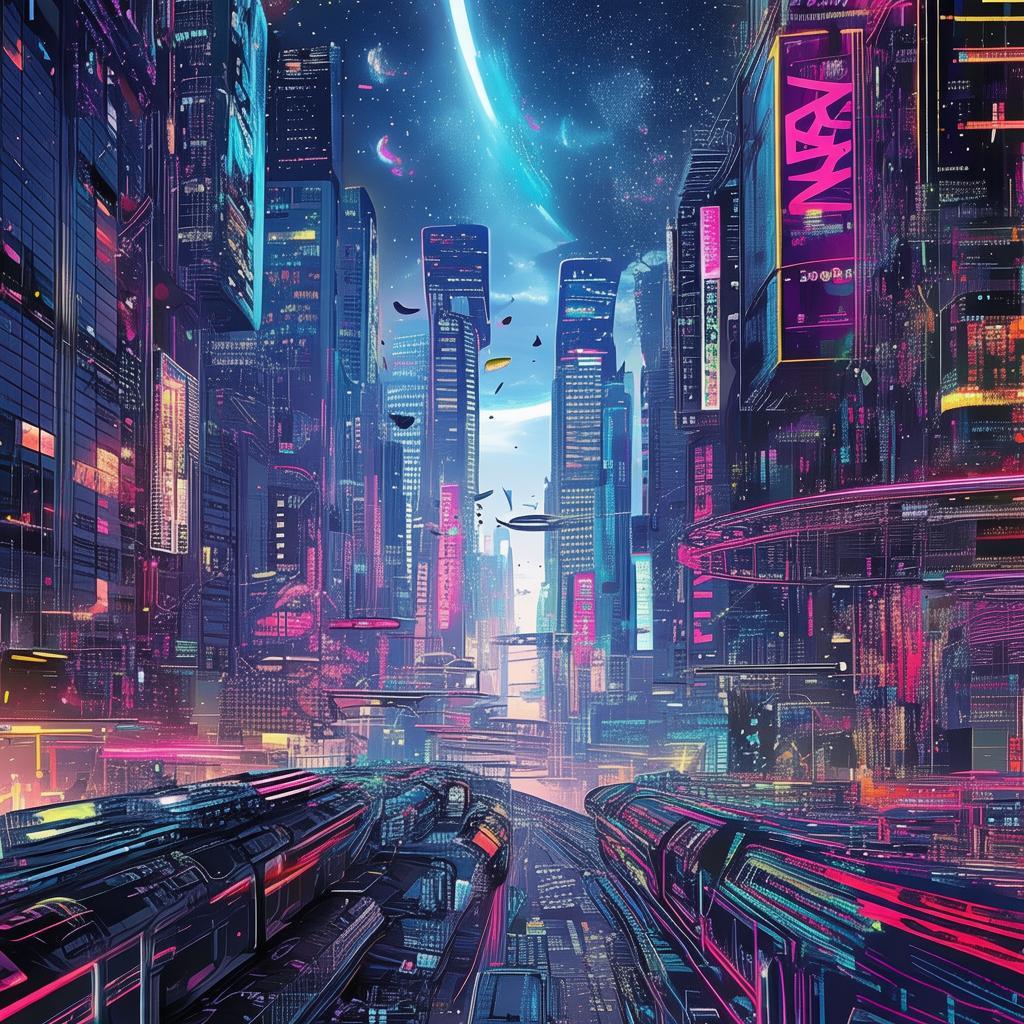The Last Bloom: A Botanist's Dystopian Escape
In the year 2147, the world had long forgotten the beauty of Earth's flora. The once vibrant landscapes were replaced by sterile urban jungles, where only the genetically engineered "BioFlora" could survive the harsh climate. Amidst this artificial existence, Dr. Elena Voss, a renowned botanist, embarked on a mission to uncover the last known natural habitat—a submerged garden beneath the Arctic ice.
Elena had dedicated her life to preserving the remnants of nature, believing that even in the darkest times, life could flourish. Her latest venture was to locate the Undersea Garden, a mythical haven of untouched biodiversity, said to be hidden in the depths of the Arctic Ocean.
The voyage was fraught with peril. The icy waters were treacherous, and the ship's crew was a mix of seasoned explorers and desperate scientists. Among them was Dr. Marcus Harrow, a genetic engineer who had once been Elena's colleague but had since become an advocate for BioFlora's superiority. His presence aboard the ship was a constant reminder of the contentious relationship between natural and engineered life.
As they descended into the abyss, the crew marveled at the ethereal glow of bioluminescent creatures that flickered like stars. Elena's heart raced with the promise of discovery, but her mind was preoccupied with the knowledge that the Undersea Garden held the key to the future of life on Earth.
One evening, while the ship was anchored over a particularly vibrant section of the garden, Elena noticed something peculiar. A cluster of plants, unlike any she had ever seen, were blooming with an intensity that seemed almost unnatural. Intrigued, she decided to take a closer look.
As she approached the plants, she noticed that they were surrounded by a shimmering aura, as if they were alive with an energy that defied scientific explanation. Her initial excitement quickly turned to concern when she realized that the plants were glowing with a virus that could potentially contaminate the entire ecosystem.
"Dr. Harrow," Elena called out, "I need to study these plants immediately. They could be the key to restoring natural life, but they also pose a grave risk."

Dr. Harrow, who had been observing the plants from a distance, approached her with a calculating gaze. "And what if they pose a risk to the BioFlora project?"
Elena's eyes narrowed. "This is not about BioFlora. This is about saving what's left of the natural world. These plants could be the last hope."
A tense argument ensued, and it wasn't long before the crew's tensions escalated into a full-blown conflict. The engineers, who had always seen natural life as a threat to their progress, were determined to destroy the plants to protect their work. Elena, however, was steadfast in her belief that the plants held the key to a new beginning.
The conflict reached its climax when Marcus, in a fit of desperation, triggered a device designed to release a chemical that would kill any life in the garden. The crew watched in horror as the once vibrant ecosystem was reduced to a field of dead plants and extinguished bioluminescence.
In the aftermath, the ship's crew was haunted by the loss of the Undersea Garden. Elena, however, felt a renewed sense of purpose. She knew that the plants had been resilient, and that even in the face of humanity's greed and shortsightedness, life could survive.
Elena returned to the surface, her resolve strengthened by the experience. She began working tirelessly to isolate the virus and find a way to neutralize it without harming the plants. The world watched with bated breath as she shared her findings with the scientific community.
It took years, but Elena finally succeeded. The virus was neutralized, and the Undersea Garden was saved. The plants began to thrive once more, and with them, the hope of a future where natural life and engineered life could coexist.
In the end, Elena's journey to the Undersea Garden was not just about preserving a slice of the natural world; it was about understanding the delicate balance between humanity's desire for progress and the need to protect the delicate ecosystems that supported life.
As the world slowly recovered from the brink of ecological disaster, Elena stood by the remnants of the Undersea Garden, her eyes reflecting the bioluminescent glow that still flickered around her. She knew that her work was far from over, but she also knew that the Undersea Garden was a symbol of hope—a reminder that even in the darkest of times, life could find a way to bloom again.
✨ Original Statement ✨
All articles published on this website (including but not limited to text, images, videos, and other content) are original or authorized for reposting and are protected by relevant laws. Without the explicit written permission of this website, no individual or organization may copy, modify, repost, or use the content for commercial purposes.
If you need to quote or cooperate, please contact this site for authorization. We reserve the right to pursue legal responsibility for any unauthorized use.
Hereby declared.








